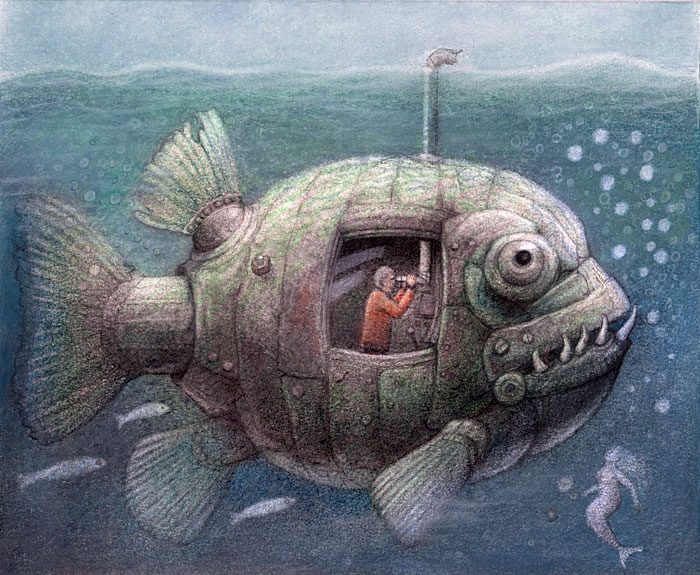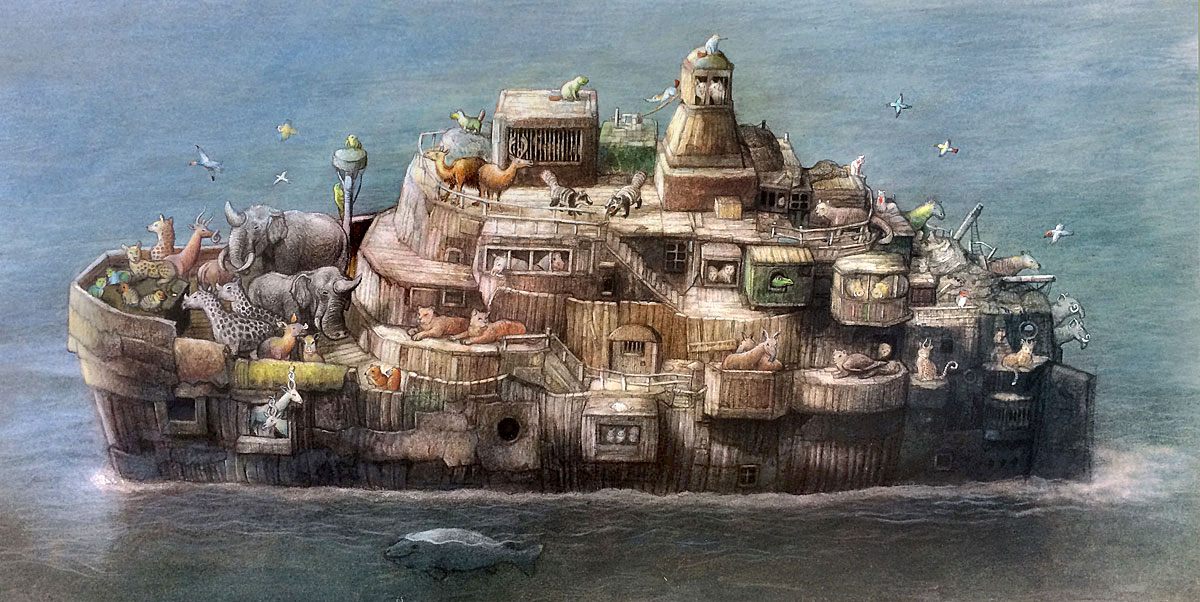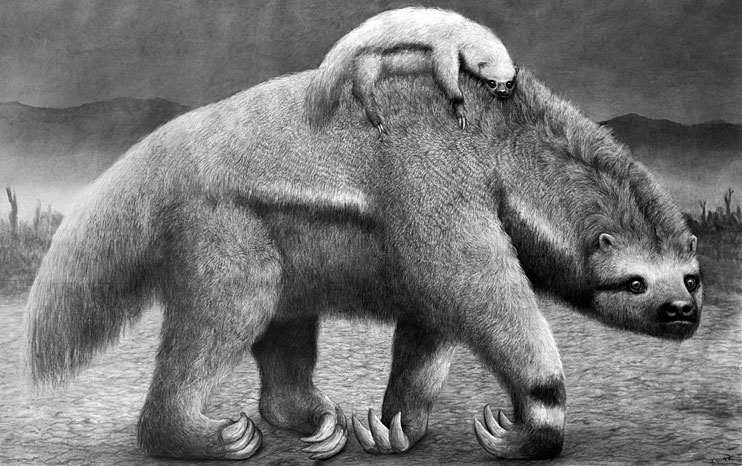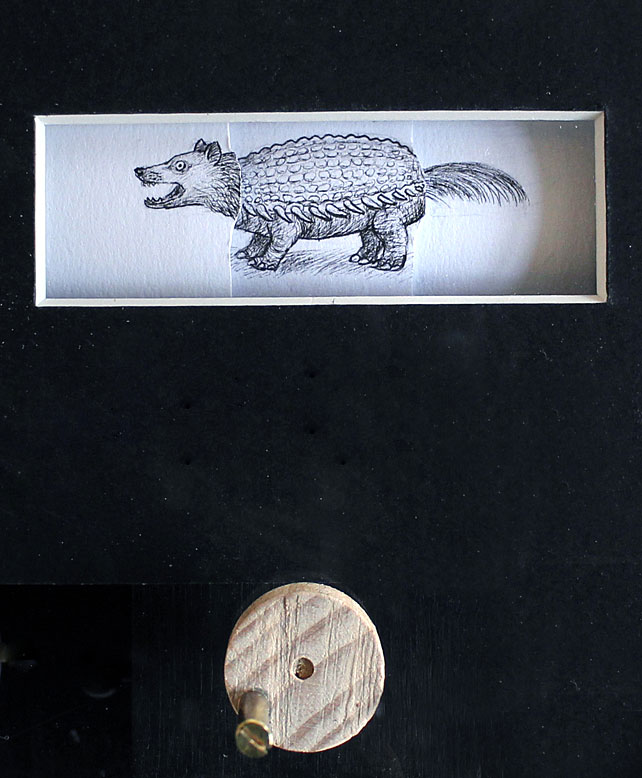
|
Translation
Hoe prijzenswaardig ook, de veelzijdigheid van Johan Scherft stelt mij zowel voor logistieke als ideële problemen. In praktisch opzicht betekent het dat ik bij het maken van een tentoonstelling moet kiezen uit vijf verschillende technieken en formaten, van reusachtige, maar niettemin gedetailleerde houtskooltekeningen van prehistorische dieren, waarvan tot nog toe slechts een teenkootje is gevonden, - bij wijze van spreken - via een bont palet aan schilderijen en aquarellen, in meerdere genre’s, tot ingewikkelde automatons. De de kroon daarvan spant een minuscule caroussel van drie rollen tekeningen, die al draaiend een duizendtal verschillende combinaties van kop, lijf en staart te zien geven, u raadt het vermoedelijk al, van tal van prehistorische dieren. Omdat het draaimechanisme met de hand wordt bediend en men zodoende dagen bezig is om alle combinaties te zien, slaat pas dan het duizelingwekkende inzicht in de complexiteit van de schepping in volle kracht toe. U raadt het vast, dit is een gelaagde zin. Met de geaquarelleerde vogeltjes, gemaakt van een blaadje papier, is iets dergelijks aan de hand, maar dat bewaar ik voor de volgende keer. |
Contact via E-mail 
Download Catalogue |
TOP





